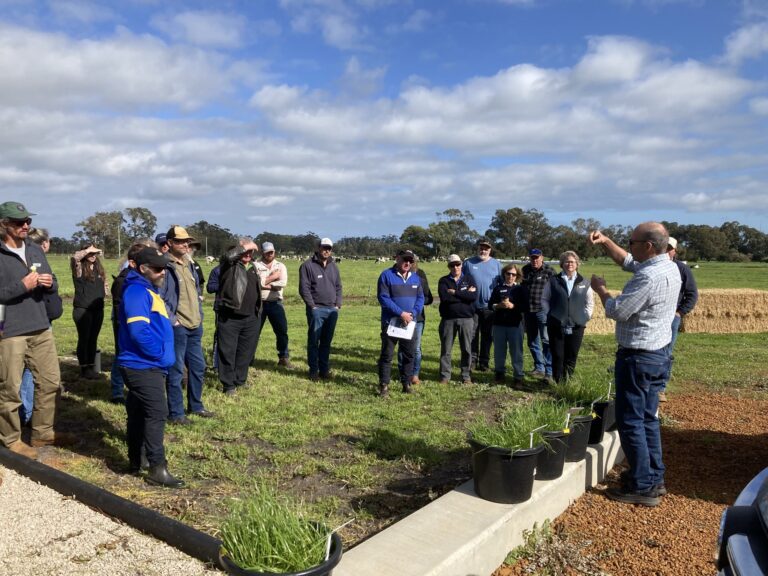
We’ve moved into spring and the conversation at farmer dinner tables has turned to hay and silage preparations.
It’s important to make the most of the wonderful rainfall we’ve had and optimise feed to survive the dry.
To help farmers hit their targets we teamed up with Western Beef Association to provide an event that would help farmers optimise their hay and silage production.
The day was packed with quality, practical tips from experts Jeisane Accioly, Dan Parnell and Martin Staines, as well as valuable contributions from local farmers and contractors.
Key takeaways
Main points highlighted on the day for making high quality hay are silage were:
- Cut early
- Wilt fast
- Aim for high quality forage
- Store carefully and
- Feed out efficiently.
When to cut
Producing a high-quality product starts with a high-quality forage, and this depends a lot on when the forage is cut.
A common concern farmers have is whether cutting early will compromise yield. While that is possible, the benefits from quality usually outweigh the loss in yield.
Often the regrowth is such that it can be cut a second or third time or grazed by livestock. But don’t be tempted to cut too low!
Remember to leave ~5-7cm of residual so the plants have the photosynthetic capacity to regrow. The residual also helps lift the cuttings off the ground to aid drying.
Another piece of advice shared on the day was to cut later in the morning after the dew has lifted, to increase drying speed.
The next step is to ted (fluff and spread) the freshly cut hay immediately. When plants are cut they close their pores within 30 minutes to 2 hours.
Tedding straight away while the pores are still open can improve drying by 30-60% and make a big difference to quality.
The aim is to ted twice within 48-72hrs to get the hay or silage down to the correct dry matter content.
For hay, that is 80-85% dry matter, for round bale silage it’s 40-50%. You can use a microwave oven to work out your dry matter content following the instructions in this tutorial on our YouTube channel.
The case for tissue testing
Feed quality has peaked while it’s standing pasture, so starting with high quality pasture is essential quality fodder. Tissue tests are a great way to optimise pasture growth as soil temperature rises in spring.
Tissue tests can accurately measure current nutrient deficiencies, particular micronutrients and trace elements in the pasture to help reach maximum growth potential.
You can learn more about the why and how behind tissue testing with these articles featuring advice from agronomist Dan Parnell and vet Ian Bradshaw:
More resources
For more detailed information on better hay and silage production here are some resources:
Storage tips
It’s not all done and dusted once the feed is baled and stacked—how it’s stored and fed out also has a big impact on feed-use efficiency.
For silage, wrapping at least four times with 50% overlap and 50% stretch helps keep air out and preserves quality. For hay, the best option is storage in a shed with a concrete floor or on pallets.
If it must be stored outside, orient the bales north–south so every side receives sunlight, helping keep them as dry as possible.
When it comes to feeding out, there are several ways to limit wastage.
The higher the feed quality, the less animals will waste, so maintaining quality throughout the process is essential. Using troughs or hay feeders reduces losses compared to feeding directly on the ground.
Be careful not to overfeed, as excess feed is often tossed around. Chopping the feed can also help, as it prevents animals from sorting through for the leaf.
In conclusion…
By focusing on timing, quality forage, careful storage, and smart feeding strategies, farmers can turn this year’s good rainfall into reliable, high-value feed for the dry months ahead.
Every step, from cutting to feeding out, plays a role in maximising efficiency and reducing waste—helping livestock perform better and making the hard work of hay and silage production truly pay off.
This event was delivered by Western Beef Association as a part of South West NRM’s FEaST 2030 project.
FEaST 2030 is funded by the Australian Government’s Natural Heritage Trust under the Climate-Smart Agriculture Program.
